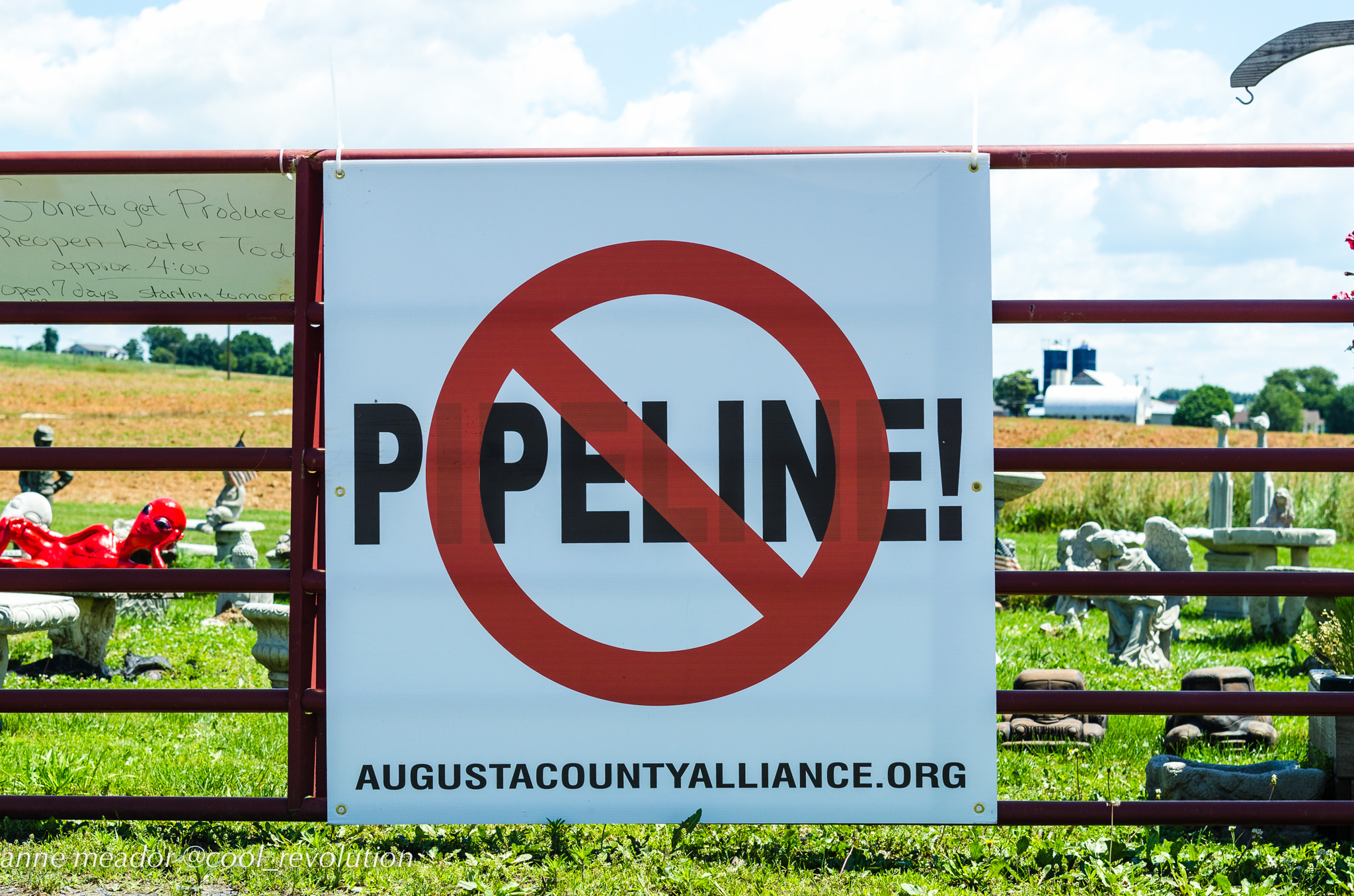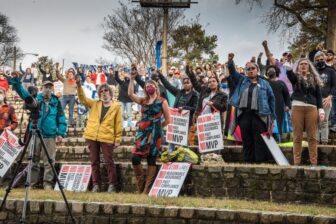Late last Friday night, FERC issued certificates of approval for both the Atlantic Coast and Mountain Valley Pipelines. It was a cowardly, horrific move for the agency to dump this news on a Friday night — but we didn’t expect much better from an agency now run by Trump’s fossil-fueled appointees.
However, there is an interesting side to this story. One FERC commissioner, Cheryl LaFleur, dissented with the others on their decision. This is the first time she has dissented on a pipeline application in her many years of service — ever. By contrast, the two commissioners who voted in favor of the pipelines were appointed barely a couple months ago.
Read her dissent below, or download a PDF here, and share widely. Stay tuned — big actions to come.
Statement of Commissioner Cheryl A. Lafleur on Order Issuing Certificates and Granting Abandoment Authority under CP15-554 et al.
“With the increasing abundance of domestic natural gas, the Commission plays a key role in considering applications for the construction of natural gas infrastructure to support the delivery of this important fuel source. Under the Certificate Policy Statement, which sets forth the Commission’s approach to evaluating proposed projects under Section 7 of the Natural Gas Act,the Commission evaluates in each case whether the benefits of the project as proposed by the applicant outweigh adverse effects on existing shippers, other pipelines and their captive customers, landowners, and surrounding communities.1 For each pipeline I have considered during my time at the Commission, I have tried to carefully apply this standard, evaluating the facts in the record to determine whether, on balance, each individual project is in the public interest.2 Today, the Commission is issuing orders that authorize the development of the Mountain Valley Pipeline Project/Equitrans Expansion Project (MVP) and the Atlantic Coast Pipeline Project (ACP). For the reasons set forth herein, I cannot conclude that either of these projects as proposed is in the public interest, and thus, I respectfully dissent.
“Deciding whether a project is in the public interest requires a careful balancing of the need for the project and its environmental impacts. In the case of the ACP and MVP projects, my balancing determination was heavily influenced by similarities in their respective routes, impact, and timing. ACP and MVP are proposed to be built in the same region with certain segments located in close geographic proximity. Collectively, they represent approximately 900 miles of new gas pipeline infrastructure through West Virginia, Virginia and North Carolina, and will deliver 3.44 Bcf/d of natural gas to the Southeast. The record demonstrates that these two large projects will have similar, and significant, environmental impacts on the region. Both the ACP and MVP cross hundreds of miles of karst terrain, thousands of waterbodies, and many agricultural, residential, and commercial areas. Furthermore, the projects traverse many important cultural, historic, and natural resources, including the Appalachian National Scenic Trail and the Blue Ridge Parkway. Both projects appear to be receiving gas from the same location, and both deliver gas that can reach some common destination markets. Moreover, these projects are being developed under similar development schedules, as further evidenced by the Commission acting on them concurrently today.3 Given these similarities and overlapping issues, I believe it is appropriate to balance the collective environmental impacts of these projects on the Appalachian region against the economic need for the projects. In so doing, I am not persuaded that both of these projects as proposed are in the public interest.
“I am particularly troubled by the approval of these projects because I believe that the records demonstrate that there may be alternative approaches that could provide significant environmental advantages over their construction as proposed. As part of its alternatives analysis, Commission staff requested that ACP evaluate an MVP Merged Systems Alternative that would serve the capacity of both projects.4 This alternative would largely follow the MVP route to deliver the capacity of both ACP and MVP in a single large diameter pipeline. Commission staff identifies significant environmental advantages of utilizing this alternative. For example, the MVP Merged Systems Alternative would be 173 miles shorter than the cumulative mileage of both projects individually. This alternative would also increase collocation with existing utility rights-of-way, avoid the Monongahela National Forest and the George Washington National Forest, reduce the number of crossings of the Appalachian National Scenic Trail and Blue Ridge Parkway, and reduce the amount of construction in karst topography. Commission staff eliminated this alternative from further consideration because it failed to meet the project’s objectives, in particular that it would “result in a significant delay to the delivery of the 3.44 Bcf/d of natural gas to the proposed customers of both ACP and MVP”5 due to the significant time for the planning and design that would be necessary to develop a revised project proposal.6
“Similarly, in the MVP FEIS, Commission staff evaluated a single pipeline alternative to the MVP project that would utilize the proposed ACP to serve MVP’s capacity needs.7 While this alternative was found to have certain environmental disadvantages, such as the need for additional compression to deliver the additional gas, the EIS acknowledges that this alternative would “essentially eliminate all environmental impacts on resources along the currently proposed MVP route.”8
“I recognize that the two alternatives described above were eliminated from further consideration because they were deemed not to meet each project’s specific stated goals. However, I believe that these alternatives demonstrate that the regional needs that these pipelines address may be met through alternative approaches that have significantly fewer environmental impacts.
1. Certification of New Interstate Natural Gas Pipeline Facilities, 88 FERC ¶ 61,227 (1999) (Certificate Policy Statement), order on clarification, 90 FERC ¶ 61,128, order on clarification, 92 FERC ¶ 61,094 (2000); 15 U.S.C. 717h (Section 7(c) of the Natural Gas Act
provides that no natural gas company shall transport natural gas or construct any facilities for such transportation without a certificate of public convenience and necessity.).
2. See Millenium Pipeline Company, L.L.C., 140 FERC ¶ 61,045 (2012) (LaFleur, Comm’r, dissenting)
3. ACP and MVP filed their applications for approval pursuant to section7(c) of the Natural Gas Act on September 18, 2015 and
October 23, 2015, respectively.
4. ACP Final Environmental Impact Statement (FEIS) at 3-6 – 3-9.
5. Id. at 3-9.
6. Staff also found that this alternative would likely limit the ability to provide additional gas to the projects’ customers, another of the stated goals for the original proposal. Id.
7 MVP FEIS at 3-14.
8 Id





